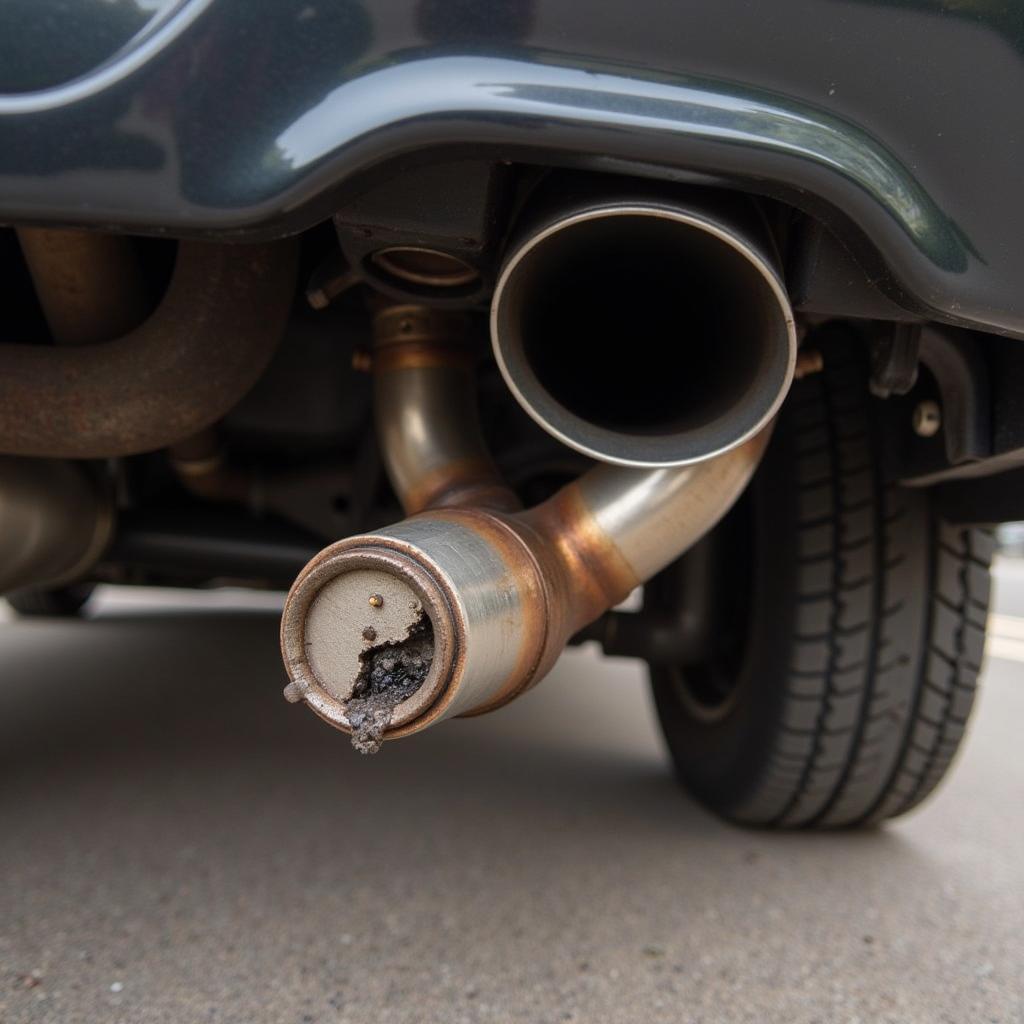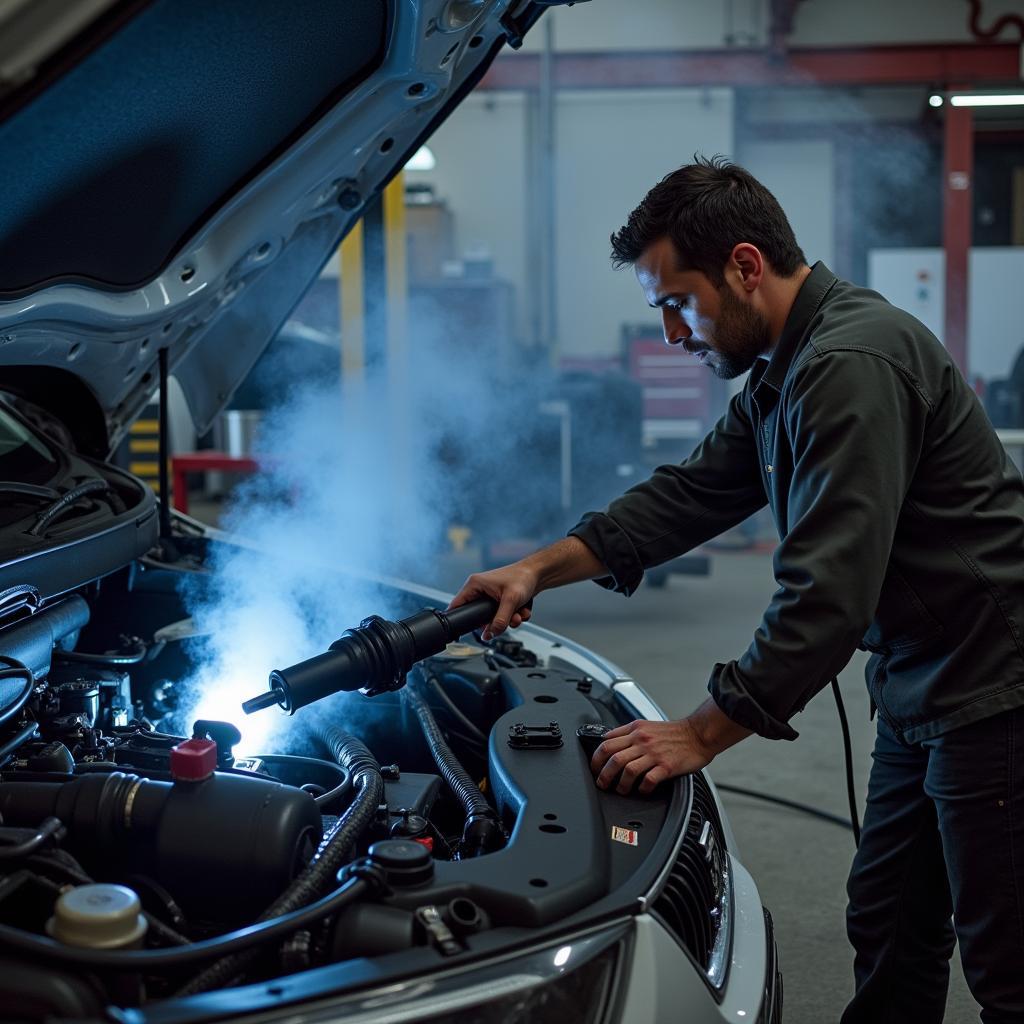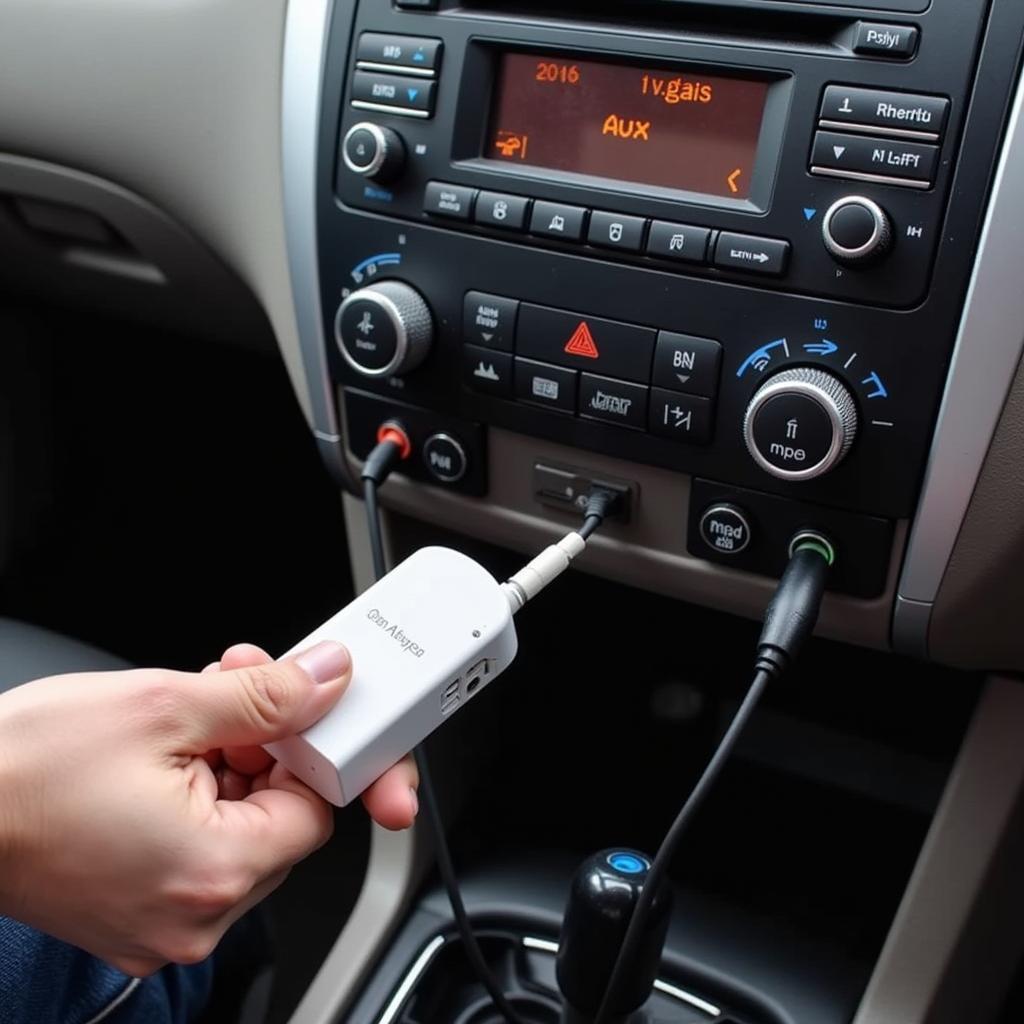The dreaded “emission control warning light” on your Seat Ibiza dashboard can be a cause for concern. This amber light, often resembling an engine outline with a diagonal line through it, signals a potential issue with your car’s emission control system. Ignoring it could lead to decreased fuel efficiency, increased emissions, and even potential damage to your vehicle’s engine.
This comprehensive guide will delve into the common causes of this warning light on a Seat Ibiza, how to diagnose the problem, and the potential solutions to get you back on the road safely and efficiently.
Understanding the Seat Ibiza Emission Control System
Before we jump into troubleshooting, it’s crucial to understand the basics of your car’s emission control system. This intricate system works tirelessly to minimize the environmental impact of your Seat Ibiza by reducing harmful pollutants released into the atmosphere.
Here are the key components of the system:
- Oxygen Sensors (O2 Sensors): These sensors monitor the oxygen levels in your exhaust gases to ensure the right air-fuel mixture for optimal combustion.
- Catalytic Converter: This component converts harmful pollutants in your exhaust into less harmful substances before they are released.
- Evaporative Emission Control System (EVAP): The EVAP system prevents fuel vapors from escaping into the atmosphere by capturing and redirecting them back to the engine for combustion.
- Exhaust Gas Recirculation (EGR) Valve: The EGR valve redirects a small amount of exhaust gas back into the combustion chamber to reduce nitrogen oxide emissions.
Common Causes of an Emission Control Warning Light on a Seat Ibiza
While a malfunctioning component within the emission control system is often the culprit, the warning light can sometimes illuminate due to less serious issues. Here are some common causes:
1. Loose or Faulty Gas Cap
This seemingly minor issue is often overlooked. A loose, damaged, or missing gas cap can trigger the emission control warning light as it can disrupt the EVAP system’s pressure.
Quick Fix: Ensure your gas cap is securely tightened. If it’s damaged, replace it with a genuine Seat Ibiza gas cap.
2. Faulty Oxygen Sensor
A malfunctioning oxygen sensor can send incorrect readings to the Engine Control Unit (ECU), leading to an illuminated warning light.
Diagnosis: A diagnostic scan can pinpoint a faulty oxygen sensor.
Solution: Replacing the faulty sensor is usually the most effective solution.
3. Catalytic Converter Problems
A failing catalytic converter, often due to a blockage or internal damage, can trigger the emission control warning light.
Diagnosis: A mechanic can inspect the catalytic converter for visible damage or perform a pressure test.
Solution: Repairing or replacing the catalytic converter is necessary.
 Seat Ibiza Catalytic Converter
Seat Ibiza Catalytic Converter
4. Spark Plug Issues
Worn-out or faulty spark plugs can cause misfires, leading to increased emissions and triggering the warning light.
Diagnosis: Inspecting the spark plugs for wear and tear.
Solution: Replacing the spark plugs with new ones recommended for your Seat Ibiza model.
5. EVAP System Leak
A leak in the EVAP system, often in the hoses or the charcoal canister, can cause fuel vapors to escape, triggering the warning light.
Diagnosis: A mechanic can perform a smoke test to locate any leaks in the EVAP system.
Solution: Repairing or replacing the leaking component is necessary.
 Seat Ibiza EVAP System Leak Detection
Seat Ibiza EVAP System Leak Detection
6. Faulty EGR Valve
A malfunctioning or clogged EGR valve can disrupt the exhaust gas recirculation process, leading to increased emissions and the warning light.
Diagnosis: A mechanic can inspect the EGR valve for clogging or damage.
Solution: Cleaning or replacing the EGR valve may be necessary.
What to Do When the Emission Control Warning Light Comes On
1. Check Your Gas Cap: As a first step, ensure your gas cap is properly tightened. If loose, tighten it and see if the light turns off after driving for a short distance.
2. Consult Your Owner’s Manual: Your Seat Ibiza owner’s manual can provide specific information and recommendations for your model year.
3. Use an OBD-II Scanner: An OBD-II scanner can provide valuable diagnostic trouble codes that can help pinpoint the issue.
4. Seek Professional Help: If the warning light persists or you suspect a more serious issue, it’s best to consult a qualified mechanic specializing in Seat vehicles.
Preventing Future Emission Control System Issues
Regular maintenance can help prevent future issues with your Seat Ibiza’s emission control system:
- Regular Servicing: Adhere to your Seat Ibiza’s recommended service schedule for spark plug replacements, oil changes, and other essential maintenance.
- Quality Fuel: Use high-quality fuel and avoid contaminated fuel, as it can damage components like the catalytic converter.
- Address Warning Lights Promptly: Never ignore dashboard warning lights. Addressing issues early can prevent more costly repairs down the line.
Remote Diagnostics and Programming: The Future of Car Repair
In today’s technologically advanced world, remote diagnostics and programming are transforming car repair. For specific issues related to your Seat Ibiza’s emission control system, remote solutions might be available.
This innovative approach allows qualified technicians to remotely diagnose problems, update software, and even perform certain repairs without the need for a physical visit to the workshop.
Conclusion
Addressing the emission control warning light on your Seat Ibiza promptly is crucial for maintaining your car’s performance, fuel efficiency, and environmental responsibility. By understanding the common causes and adopting a proactive approach to maintenance, you can keep your Seat Ibiza running smoothly while minimizing its impact on the environment.

